Why Select High Holding Power Anchor For Safe And Reliable Anchoring In Various Mooring Conditions
High holding power anchors are a specialized kind of anchor created to offer improved holding capability and stability in a variety of seabed situations. Its goal is to safely anchor boats, buildings, or other pieces of equipment to the seafloor in order to stop drifting or unwanted movement. High holding power HHP anchors are designed to withstand the pressures brought on by wind, waves, and currents, providing reliable mooring even in difficult conditions.
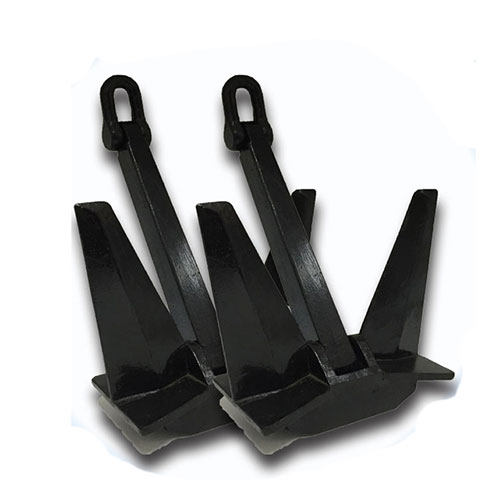
Key Components and Design Features of High Holding Power Anchor
Flukes or Blades
Many of the flukes or blades on high holding power anchors pierce the seafloor or substrate. The purpose of these flukes is to maximize holding capacity by generating resistance to pulling forces. Depending on the specific anchor design, the flukes’ number, shape, and angle can change.
Shank
The shank is the anchor’s main structural component, connecting the flukes to the anchor’s connection point. It gives the anchor strength and rigidity while also transmitting load from the flukes to the anchor rode.
Stock
The stock is a crossbar or rod placed near the anchor’s crown. It serves as a pivot point, allowing the anchor to properly position itself as it rests on the seafloor. The stock aids in aligning the anchor with the force direction, resulting in efficient penetration and holding power.
Crown
The crown, which is placed at the top of the anchor, connects the shank and the stock. It equally distributes the load across the anchor and ensures structural stability.
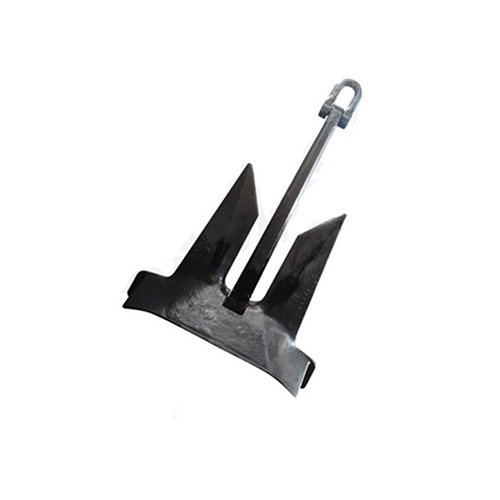
Weight Distribution
To maximize effectiveness, high holding power anchors frequently have a balanced weight distribution. The weight is divided strategically across the flukes, shank, and crown to provide optimal penetration and maximum holding strength.
Surface Area
HHP anchor flukes often have a wide surface area. By increasing the friction between the anchor and the seafloor, the greater surface area creates a higher resistance to dragging forces.
Reinforcement and Material Selection
High holding power anchors are made of strong and long-lasting materials such as steel alloys. To endure the enormous loads and strains experienced during anchoring, the components are frequently strengthened.
Roll Bar or Roll-Palm
A roll bar or roll-palm situated at the back of some high holding power anchor types. This component helps to ensure that the anchor aligns properly with the force direction and prevents the anchor from overturning or dislodging during changes in wind or current direction.
Fluke Angle
The angle of the flukes relative to the shank influences the holding power of the anchor. A larger fluke angle often improves the anchor’s penetration and holding capabilities.
Retrieval Ability
HHP anchors are intended for retrieval. They frequently incorporate features that make recovery easier, such as a trip line attachment point or a disassembly mechanism for easy removal from the seafloor.
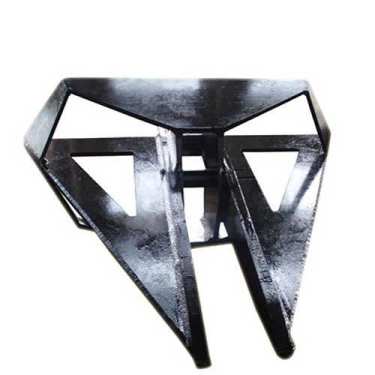
Differences Between High Holding Power Anchors And Traditional Anchors
Design and Shape
Traditional Anchors
Traditional anchors frequently include a stock or shank attached to two or more curved or concave flukes or blades. Flukes are typically wider and wider, with weight and fluke surface area being used to provide holding power.
High Holding Power Anchors
High holding power HHP anchors have sharp, pointed flukes or blades that are usually longer and narrower than standard anchors. The form of high holding power anchors provides for greater penetration into the seabed and thus greater holding capacity.
Weight Distribution
Traditional Anchors
Traditional anchors have more equally distributed weight throughout their structure, with the goal of achieving a balance of weight and surface area for holding force.
High Holding Power Anchors
Anchors with high holding power enhance weight distribution by concentrating more weight in the fluke or blade region. This weight distribution improves the anchor’s capacity to penetrate and hold in difficult seabed conditions.
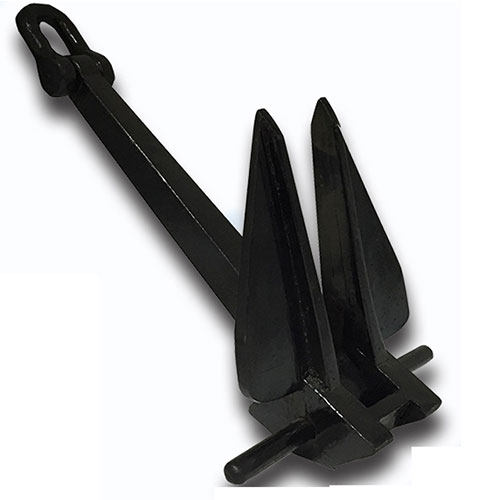
Holding Power and Performance
Traditional Anchors
Traditional anchors create drag and hold against horizontal forces by relying on their weight and fluke surface area. They function effectively in some seabed conditions but may have a lower holding capability in more difficult situations.
High Holding Power Anchors
Anchors with high holding power are specifically engineered to perform well in a variety of seabed conditions, including soft sediments, clay, and even hard or rocky substrates. Their sharper blades and better weight distribution improve penetration and overall holding capacity, resulting in superior performance and dependability.
Applications and Industry Use
Traditional Anchors
Traditional anchors are often applied in leisure boating, small vessels, and inshore applications with lesser holding power requirements.
High Holding Power Anchors
High holding power HHP anchors are extensively used in offshore industries, including offshore oil and gas platforms, floating production systems, big commercial boats, and floating wind turbines. Because of their increased holding capacity and dependability, they are ideal for use in harsh marine settings.
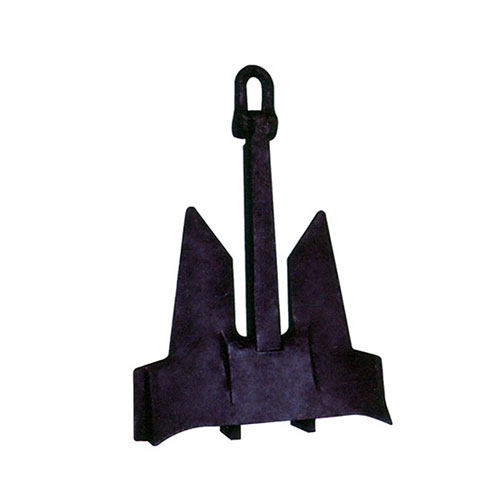
Factors Influencing the Selection of High Holding Power Anchors
The factors that must be considered in order to ensure optimal performance and safety of the marine anchor.
Vessel Size and Type
Anchor selection is heavily influenced by the vessel’s size and nature. Anchors with higher holding capacity are required for larger vessels to withstand the additional loads created by their size and weight. Depending on their design and intended purpose, different types of vessels (e.g., sailboats, motor yachts, commercial ships) may have different needs.
Holding Power Requirements
The holding power needs vary according to the application and environmental circumstances. Water depth, seabed type (sand, mud, rock), wind and current conditions, and predicted loads must all be considered. Under these conditions, the anchor should be able to provide enough holding force to keep the vessel in place.
Anchor Weight and Size
The weight and size of the anchor should be appropriate for the vessel. An anchor that is too small or light may not provide enough holding power, while an anchor that is too large or heavy may be impractical to handle and stow on board. Balancing weight with holding power is essential.
Anchor Type
High holding power anchors come in a variety of shapes and sizes, including plow anchors, claw anchors, fluke anchors, N type anchors, TW type anchors and others. Each variety has its own set of benefits and adaptability for various seabed conditions. When choosing an anchor type, consider factors such as holding power, penetration ability, and convenience of usage.
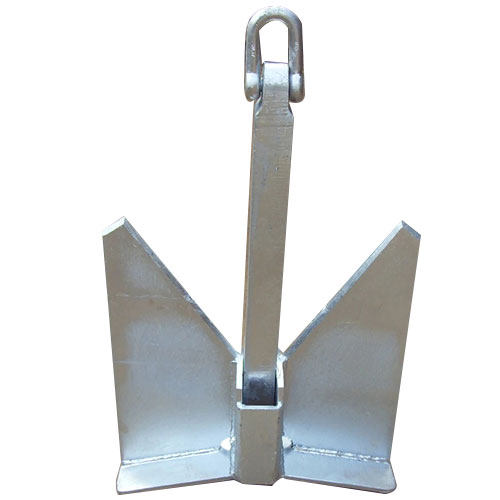
Construction Material
To ensure strength and longevity, high holding power anchors are often made of materials such as steel or alloys. To properly endure the sea environment, the material should be corrosion-resistant.
Ease of Deployment and Retrieval
The ease of deploying and retrieving the anchor should be considered. Anchor design, weight, handling methods, and compatibility with the vessel’s anchoring system are all considerations to consider.
Reputation and Reviews
It is advantageous to investigate the reputation and reviews of various anchor brands and models. Feedback from other sailors, professionals, and specialists can provide insights on individual anchors’ performance, reliability, and durability.
Budget
For many sailors, cost is an essential consideration. While quality and performance must be prioritized, the anchor selection should also be in line with the given budget.
Legal and Regulatory Requirements
There may be legal or regulatory requirements specifying the type and size of anchors allowed, depending on the region and type of canal. Compliance with these standards is required to ensure safety and avoid penalties.
Summary
High holding power anchors contribute to the stability, safety, and productivity of maritime and offshore operations by firmly anchoring vessels and structures. HHP anchors have become the ideal choice for important mooring operations in offshore due to its optimum design, weight distribution, and capacity to thrive in different seabed conditions.


